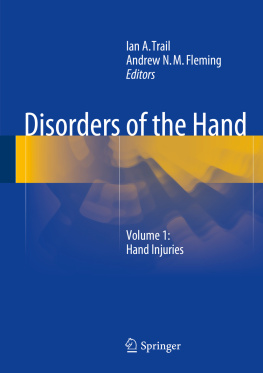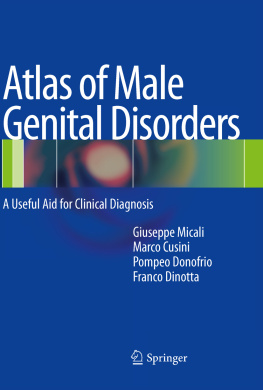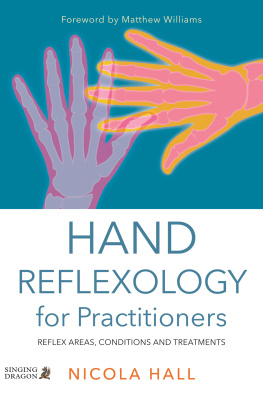A surgeons understanding of the vascular anatomy of the upper limb, common anatomic variations and the typical pattern of collateral flow are essential in the assessment and management of suspected vascular injury.
Arterial System
The upper limbs are supplied by a right and left subclavian artery that becomes the axillary artery as it passes the outer edge of the first rib and enters the apex of the axilla.
Clinical Pearl 5 Branches of the Subclavian Artery (Mnemonic VIT amin C&D)
VVertebral
IInternal thoracic
TThyrocervical trunk (inferior thyroid, suprascapular, transverse cervical)
CCostocervical trunk (first intercostal, deep cervical)
DDorsal scapular artery
The axillary artery extends to the inferior border of the teres major muscle where it enters the periphery and becomes the brachial artery. The axillary artery has three parts according to its relationship to the pectoralis minor (medial, deep, and inferior) and six named branches, the supreme thoracic, thoracoacromial axis, lateral thoracic artery, subscapular trunk and the anterior and posterior circumflex humeral vessels (the mnemonic is Sixties Teens Love Sex And Pot or Screw The Lawyers Save A Patient or She Tastes Like Sweet Apple Pie). Apart from the thoracic vessels these are important for collateral flow around the shoulder.
Clinical Pearl 6 Branches of the Axillary Artery (Mnemonic)
The brachial artery enters the flexor compartment in the medial arm and proceeds superficially in this space towards the elbow, gradually spiralling more anterior until it lies midway between the humeral epicondyles in the antecubital fossa. It bifurcates near the neck of the radius into radial and ulnar arteries. Major branches are the profunda brachii and superior and inferior ulnar collaterals. The profunda brachii branches first and follows the radial nerve to run posterior, then lateral to the humerus, and ends as anterior and posterior branches that communicate with the radial recurrent and interosseous recurrent vessels at the cubital anastamosis around the elbow joint. The superior and inferior ulnar collateral branches pass posterior and anterior to the medial epicondyle respectively to join the ulnar recurrent vessels distally. All these branches providing major sources of collateral flow across the elbow.
The radial artery appears as a direct continuation of the brachial artery. It takes a more superficial course than the ulnar artery in the proximal forearm, initially travelling deep to the bicipital aponeurosis and brachioradialis but superficial to pronator teres, flexor digitorum superficialis and flexor pollicis longus, along its path to the wrist. At the proximal wrist, it gives off the superficial palmar artery and a volar carpal branch before proceeding dorsally beneath the first extensor compartment tendons. In the snuffbox it gives rise to the dorsal carpal branch and the first dorsal metacarpal artery before diving between the two heads of the first dorsal interosseous muscle and entering the palm as the deep palmar arch.
The ulnar artery passes beneath pronator teres and the fibrous arch of flexor digitorum superficialis; it joins the ulnar nerve at the junction of the middle and proximal thirds of the forearm, on the surface of the flexor digitorum profundus muscle belly. The ulnar neurovascular bundle proceeds distally to the wrist where it lies immediately deep and radial to the flexor carpi ulnaris tendon. It gives rise to a dorsal cutaneous branch 25 cm proximal to the pisiform and a palmar and dorsal carpal branch at the wrist. It enters the hand by crossing superficial to the transverse carpal ligament through Guyons canal within which it gives a deep palmar branch and continues as the superficial palmar arch.
The common interosseous artery originates from the ulnar within a few centimetres of the elbow and almost immediately divides into anterior and posterior branches. These lie deep on either side of the interosseous membrane enroute to the wrist. They communicate via perforating branches, which pierce the membrane, and then unite distally where branches connect with palmar and dorsal carpal arches, providing a collateral pathway to the hand.
Within the hand and wrist there is a system of arterial arches, which provide multiple interconnecting anastamotic networks and collateralisation. They demonstrate significant anatomic variance, particularly on the radial side of the hand. The most proximal of these arches contains volar and dorsal carpal segments that encircle the wrist. It has contributions from each of the radial, ulnar and interosseous arteries. The volar carpal arch sends branches distally into the hand to anastamose with the deep palmar arch. Dorsal metacarpal arteries two to four arise from the dorsal carpal arch and proceed distally on their respective interossei, communicating via perforating vessels with the palmar circulation at the metacarpal heads. They bifurcate into dorsal digital branches to supply adjacent sides of all four fingers.
The superficial palmar arch is a direct continuation of the ulna artery beyond the flexor retinaculum. It lies in contact with the deep surface of the palmar aponeurosis running transversely at the level of the abducted thumb. From its convexity arise digital branches- a proper digital artery to the ulna side of the little finger and three common digital arteries, to the second, third and fourth web spaces.













